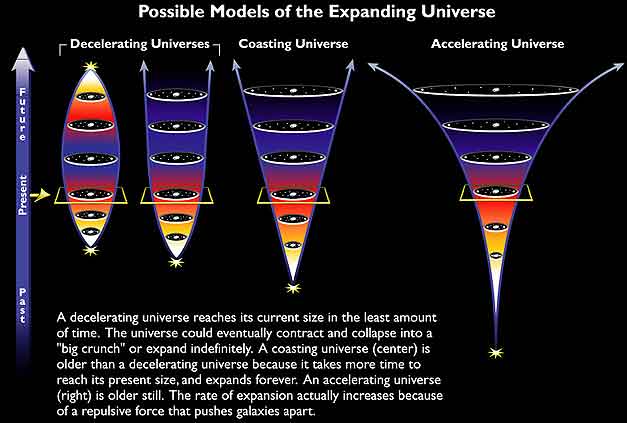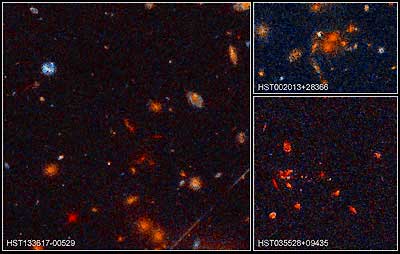 |
|
Einstein's General Theory of
Relativity (1915) suggested the universe is expanding. A survey of galaxy clusters by NASA's Hubble Space Telescope has found what could be some of the most distant clusters ever seen. If the distances and masses of the clusters are confirmed by ground-based telescopes, the survey may hold clues to how galaxies quickly formed into massive large-scale structures after the Big Bang, and what that may mean for the eventual fate of the universe. According to theoretical models, if the clusters turn out to be massive and very distant, it could imply that the cosmos does not contain enough matter for gravity to stop the expansion of the universe. These models predict that such a low-density universe would have built most of its galaxy clusters long ago. About 10 to 20 of the farthest clusters in the Hubble survey may be over seven billion light years away, which means that the clusters, and their populations of tens or perhaps hundreds of galaxies each, were fully assembled early in the history of the universe. Present distance estimates are based on the colors of the galaxies in each cluster. The redder the overall cluster appears, the more distant it is, an assumption based on the apparent reddening of light -- known as red shift -- as stars and galaxies move away from us at high speeds. The distances can be more accurately measured using a spectrograph attached to a ground-based telescope. The Hubble survey contains 92 new clusters uncovered during a six-year sky survey known as the Medium Deep Survey, led by a team of astronomers now at Carnegie Mellon University, Pittsburgh, PA. |

